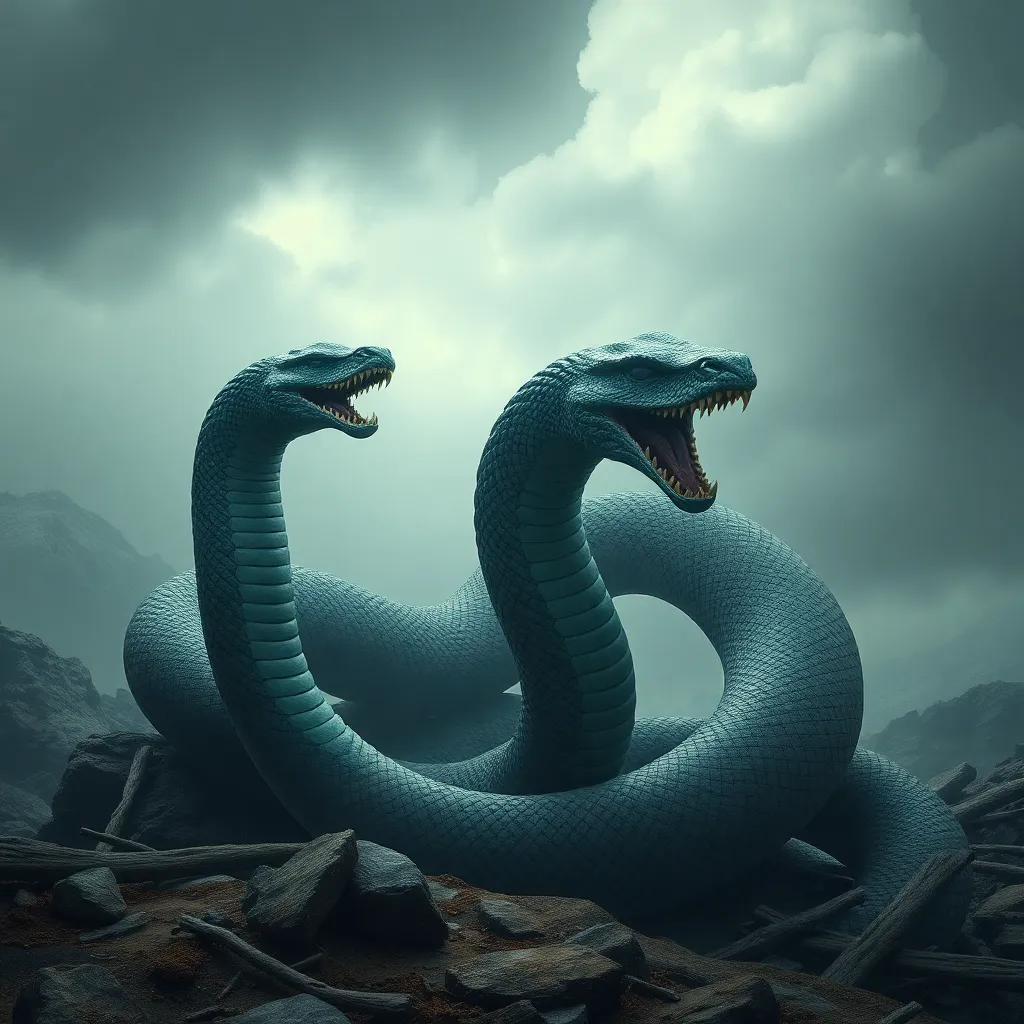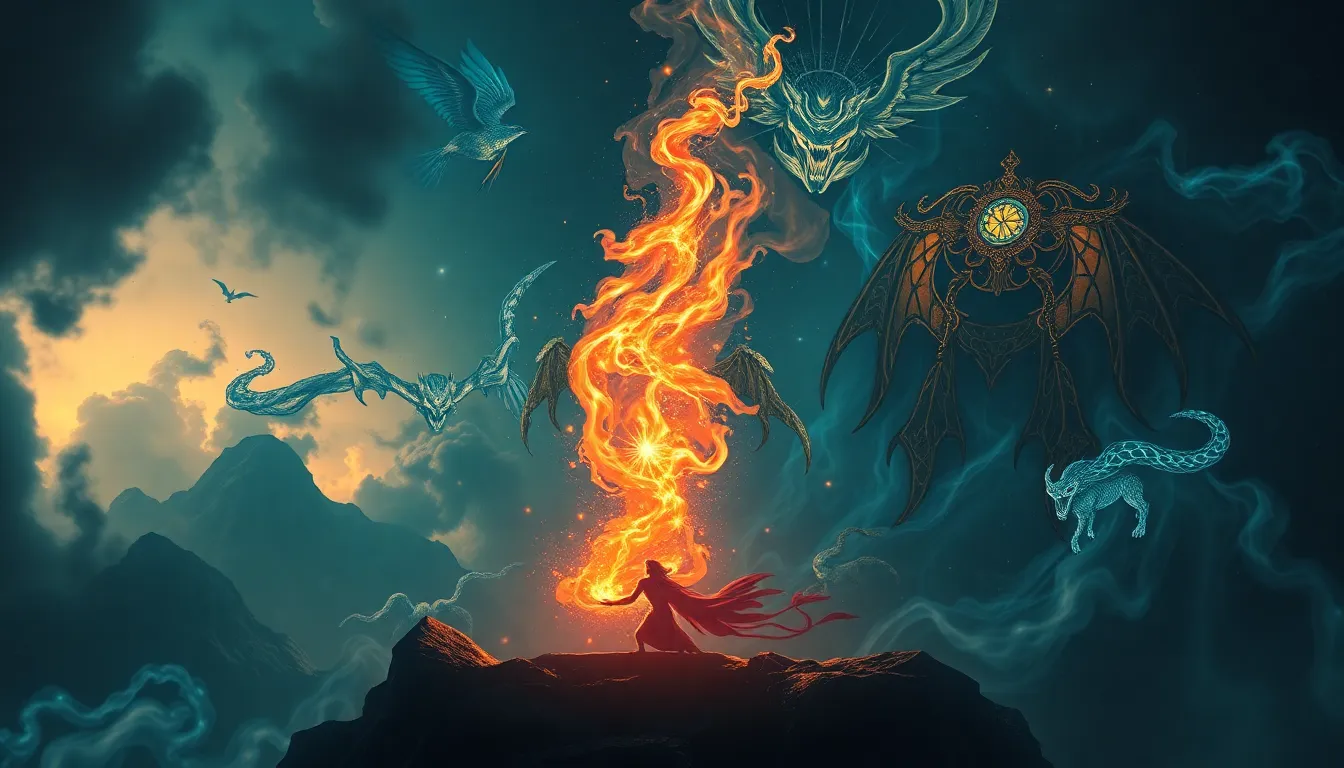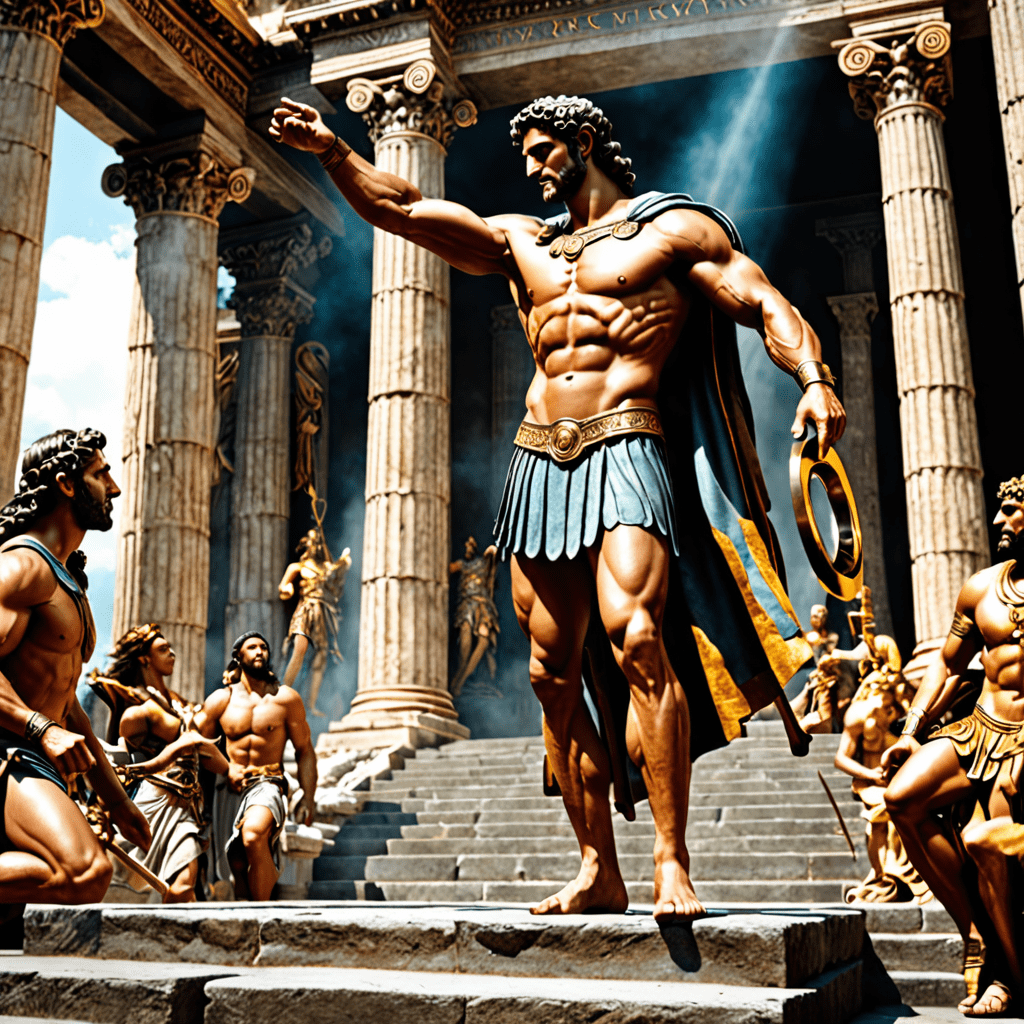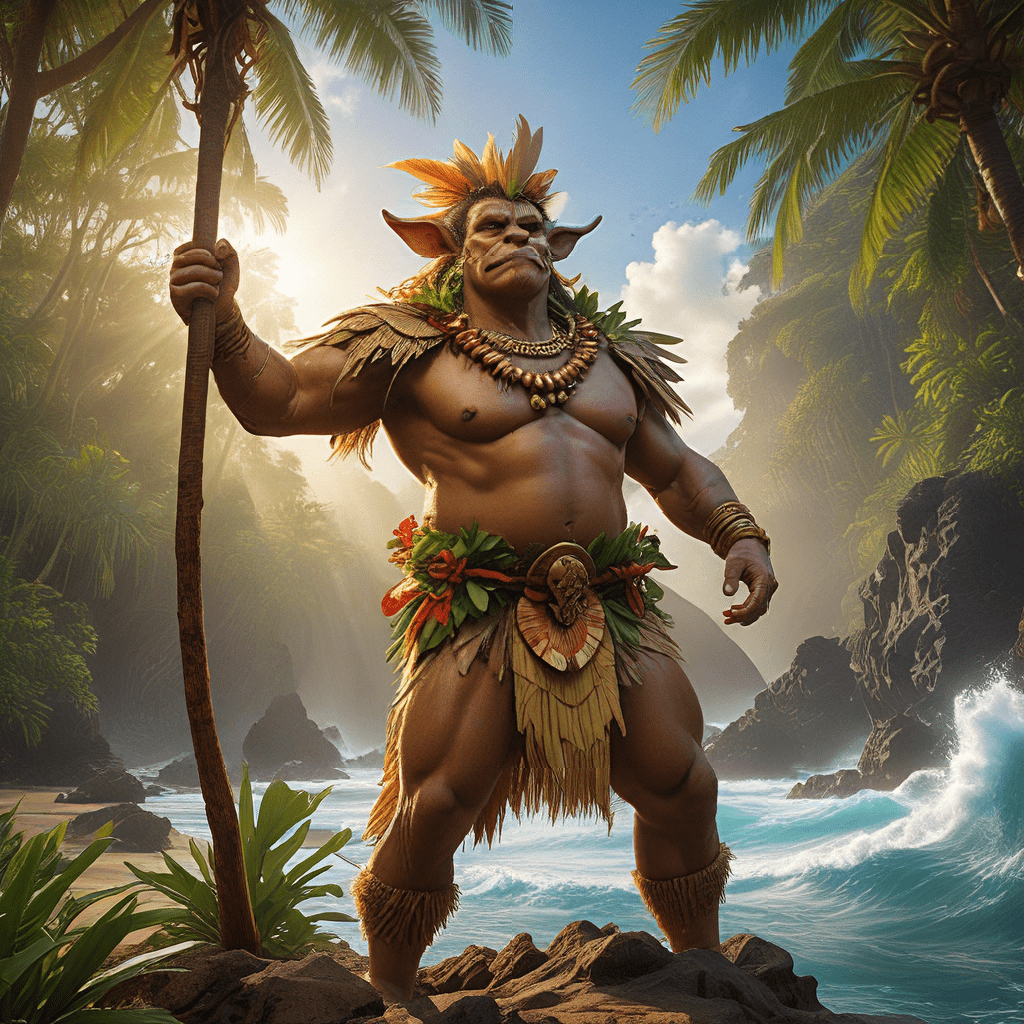The Serpent’s Gender: Examining the Gender of Jörmungandr in Norse Mythology
I. Introduction
Jörmungandr, often referred to as the Midgard Serpent, is one of the most intriguing figures in Norse mythology. This colossal serpent encircles the Earth, representing both a profound threat and a vital aspect of the cosmos. As a child of the trickster god Loki and the giantess Angerboda, Jörmungandr’s existence is intertwined with themes of chaos, fate, and the cyclical nature of life and death. Understanding the gender of Jörmungandr provides a nuanced perspective on the character and the mythology surrounding it.
Examining gender in mythological contexts is essential as it reveals the complexities of identity, power dynamics, and societal norms within the narratives. Gender roles often reflect the societal values of the culture from which they originate, and in Norse mythology, these roles can be fluid and multifaceted. This article aims to explore the gender of Jörmungandr, analyzing traditional interpretations, contemporary viewpoints, and the implications of gender in mythological narratives.
II. The Mythological Context of Jörmungandr
In the myth of Ragnarök, Jörmungandr plays a pivotal role as a harbinger of doom. It is foretold that during Ragnarök, the serpent will rise from the ocean, causing widespread destruction, and ultimately engage in a fateful battle with Thor, the god of thunder. This confrontation symbolizes the struggle between order and chaos, where Jörmungandr embodies the chaotic forces of nature.
Jörmungandr’s relationships with other deities, particularly Thor and Loki, are significant in understanding its role in Norse mythology. Thor, often seen as the protector of humanity, stands in stark contrast to Jörmungandr, who represents a primal threat. Loki’s role as the father of Jörmungandr complicates the narrative, as Loki is also a figure of chaos and transformation. The dynamic between these characters illustrates the interconnectedness of fate, family, and the cyclical nature of life.
Culturally, serpents in Norse lore are often viewed as symbols of danger and transformation. They embody the dual nature of existence, representing both life and death, creation and destruction. This duality is essential when considering the gender identity of Jörmungandr, as serpents frequently escape conventional gender classifications.
III. Traditional Interpretations of Jörmungandr’s Gender
Historical depictions of Jörmungandr often lean towards a masculine interpretation, primarily due to the use of male pronouns in many ancient texts. The Old Norse term for serpent, “ormr,” is grammatically masculine, which influences the perception of Jörmungandr’s gender. However, this interpretation may not fully encapsulate the complexity of its character.
Ancient texts, such as the Poetic Edda and the Prose Edda, provide insights into Jörmungandr’s narrative. In these texts, Jörmungandr is frequently portrayed as a monstrous figure, emphasizing its threat to the gods and humanity. The language used in these texts often reflects traditional gender roles, which can lead to a rigid interpretation of Jörmungandr’s gender.
Moreover, gendered language and symbolism play a crucial role in shaping the narrative. Jörmungandr’s association with chaos and destruction can be seen as traditionally masculine traits in mythological contexts. However, such associations are not definitive and can be challenged through deeper analysis.
IV. The Fluidity of Gender in Norse Mythology
Norse culture exhibits a range of gender roles that are not strictly binary. The concept of gender fluidity is prevalent among many deities, most notably Loki, who can change genders at will and even give birth. This fluidity allows for a more dynamic interpretation of characters and their roles within the myths.
Examples of gender fluidity among deities in Norse mythology include:
- Loki transforming into a mare and giving birth to Sleipnir, Odin’s eight-legged horse.
- Freyr, a god associated with fertility, who has both masculine and feminine attributes.
- Frigg, who embodies both nurturing and warrior-like qualities.
The implications for interpreting Jörmungandr’s gender are significant. If we consider the fluidity of gender roles within Norse mythology, Jörmungandr may not fit neatly into a masculine or feminine classification. Instead, it could represent a blend of both, embodying the chaos that transcends traditional gender roles.
V. Contemporary Interpretations and Reinterpretations
Modern feminist and queer readings of Jörmungandr challenge traditional interpretations, offering new perspectives on its character and narrative significance. Contemporary scholars and artists explore the gender dynamics present in Norse mythology, often emphasizing the need for a more inclusive understanding of gender.
The impact of contemporary culture on mythological analysis is profound. As society progresses towards recognizing diverse gender identities, interpretations of mythological figures like Jörmungandr evolve. This shift encourages a re-examination of traditional narratives, allowing for greater representation of non-binary and fluid identities.
Case studies of recent adaptations in literature and media demonstrate these contemporary interpretations:
- The portrayal of Jörmungandr in graphic novels, where it is often depicted with fluid characteristics.
- Television series that explore Jörmungandr’s narrative through a modern lens, highlighting themes of identity and transformation.
- Academic works that analyze Jörmungandr’s role as a symbol of chaos, exploring its implications for gender studies.
VI. Symbolic Meanings of Gender in Jörmungandr’s Narrative
Jörmungandr’s narrative serves as a rich symbol of chaos and destruction within Norse mythology. The serpent’s role as the antagonist to Thor highlights the gendered dynamics of power and conflict. Gender can be viewed as a lens through which we understand these mythological themes, particularly in relation to societal fears and values.
Moreover, Jörmungandr’s gender plays a crucial role in the power dynamics present in Norse myths. The serpent embodies the chaotic forces that challenge the established order, represented by Thor and the other gods. This struggle reflects broader themes of masculinity and femininity, as well as the societal expectations placed on each gender.
VII. Comparative Analysis with Other Mythological Serpents
Comparing Jörmungandr with serpents in other mythologies reveals both similarities and differences. In Greek mythology, for example, the serpent Python represents the embodiment of chaos, while in Indian mythology, the serpent Naga symbolizes fertility and protection. These figures, while distinct, share common themes of duality and transformation.
The role of serpents in representing duality and transformation across cultures illustrates the universality of these symbols. Serpents often serve as mediators between realms, embodying both danger and wisdom. This duality is crucial in understanding Jörmungandr’s narrative as it highlights the complexities of gender and identity.
Insights gained from cross-cultural comparisons can enhance our understanding of Jörmungandr’s character, emphasizing the need for a more nuanced interpretation that transcends traditional gender binaries.
VIII. Conclusion
In summary, the examination of Jörmungandr’s gender reveals a complex interplay of traditional interpretations and contemporary perspectives. While historical depictions have often categorized Jörmungandr within a masculine framework, the fluidity of gender roles in Norse mythology allows for a broader understanding.
The relevance of gender studies in mythological research underscores the importance of examining narratives through diverse lenses. As society continues to evolve, so too should our interpretations of mythological figures like Jörmungandr, paving the way for future research that embraces the complexities of gender narratives in Norse mythology.
Future directions for research could include a deeper exploration of Jörmungandr’s role within the context of gender fluidity, as well as comparative studies with other mythological serpents to enrich our understanding of this enigmatic figure.




